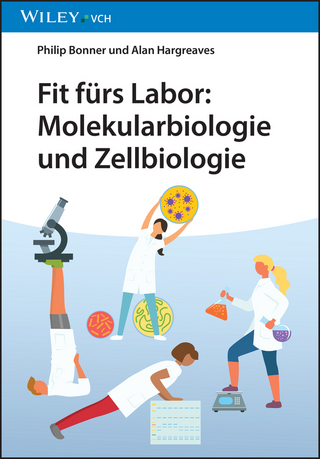
Practical Stereology
Springer-Verlag New York Inc.
978-1-4613-5453-6 (ISBN)
Stereology is the science that relates three-dimensional structure to the two-dimensional images that can be measured. The most common field of application is in microscopy, both of man-made materials (metals, ceramics, composites, etc.) and of biological tissue samples. This book covers the applications and terminology of both fields. Recent emphasis in stereology is concerned with sampling strategies to avoid bias due to directionality and non-uniformity, and these methods are fully covered. So are the classic techniques that measure size distributions, surface curvature, etc., which are widely useful but not discussed in other recent texts. Finally, most stereology is taught as manual procedures using counting and grids, but this text also covers the use of modern desktop computers for image analysis and processing to obtain and interpret the stereological data.
1: Introduction.- Elements of microstucture.- Geometric properties of features.- Typical stereological procedures.- Fundamental relationships.- Intercept length and grain size.- Curvature.- Second order stereology.- Stereology of single objects.- 2: Basic Stereological Procedures.- What stereology is.- How stereology works.- Why stereology works.- Ground rules for applying stereology.- 3: Geometry of Microstructures.- The qualitative microstructural state.- The quantitative microstructural state.- The topographic microstructural state.- 4: Classical Stereological Measures.- Two-dimensional structures; area fraction from the point count.- Volume fraction from the point count.- Two-dimensional structures; feature perimeter from the line intercept count.- Three-dimensional structures: surface area and the line intercept count.- Three-dimensional microstructures; line length and the area point count.- 5: Less Common Stereological Measures.- Three-dimensional features: topological properties and the volume tangent count.- Three-dimensional features: the mean caliper diameter.- Mean surface curvature and its integral.- The sweeping line probe in two dimensions.- Edges in three-dimensional Microstructures.- 6: Sample Design in Stereology.- Population of point probes.- Population of lines in two dimensions.- Line probes in three dimensions.- Planes in three-dimensional space.- Disectors in three-dimensional space.- Sampling strategies in 3D.- 7: Procedures for IUR Sampling.- Volume fraction.- Sampling planes.- Isotropic planes.- Isotropic line probes.- Volume probes—the Disector.- Networks.- 8: Statistical Interpretation of Data.- Sources of variability in measurement.- Distributions of values.- The mean, median and mode.- The central limit theorem and the Gaussiandistribution.- Variance and standard deviation.- Testing distributions for normality—skew and kurtosis.- Some other common distributions.- Comparing sets of measurements—the T-test.- Nonparametric comparisons.- Linear regression.- Nonlinear regression.- 9: Computer-Assisted Methods.- Getting the image to the computer.- Display and storage.- Image processing.- Overlaying grids onto images.- Basic stereological calculations.- 10: Computer Measurement of Images.- Measurement using grids.- Measuring area with pixels.- Measurement parameters—size.- Other feature measurements: shape and position.- Image processing to enable thresholding and measurement.- Image processing to extract measurable information.- Combining multiple images.- 11: Geometric Modeling.- Methods: analytic and sampling.- Sphere intercepts.- Intercept lengths in other bodies.- Intercept lengths in three dimensions.- Intersections of planes with objects.- Bertrand’s paradox.- The Buffon needle problem.- 12: Unfolding Size Distributions.- Linear intercepts in spheres.- Plane intersections.- Other shapes.- Simpler methods.- Lamellae.- 13: Anisotropy and Gradients.- Grain structures in rolled metals.- Boundary orientation.- Gradients and neighbor relationships.- Distances and irregular gradients.- Alignment.- 14: Finite Section Thickness.- Projected images.- Bias in stereological measurements.- Measurements within sections.- 15: Three-Dimensional Imaging.- Limitations of stereology.- Serial methods for acquiring 3D image data.- Inversion to obtain 3D data.- Stereoscopy as a 3D technique.- Visualization.- Processing.- Measurement.- References.
| Zusatzinfo | X, 381 p. |
|---|---|
| Verlagsort | New York, NY |
| Sprache | englisch |
| Maße | 155 x 235 mm |
| Themenwelt | Naturwissenschaften ► Biologie ► Allgemeines / Lexika |
| Naturwissenschaften ► Physik / Astronomie ► Angewandte Physik | |
| Technik ► Maschinenbau | |
| ISBN-10 | 1-4613-5453-6 / 1461354536 |
| ISBN-13 | 978-1-4613-5453-6 / 9781461354536 |
| Zustand | Neuware |
| Informationen gemäß Produktsicherheitsverordnung (GPSR) | |
| Haben Sie eine Frage zum Produkt? |
aus dem Bereich


